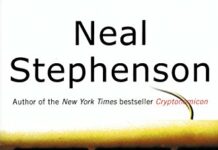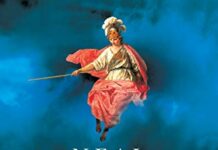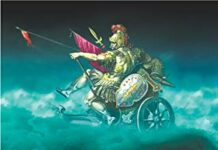
Ebook Info
- Published: 2012
- Number of pages: 502 pages
- Format: Epub
- File Size: 2.03 MB
- Authors: Greg Bear
Description
The first novel to be released in The Foreworld Saga, The Mongoliad: Book One, is an epic-within-an-epic, taking place in 13th century. In it, a small band of warriors and mystics raise their swords to save Europe from a bloodthirsty Mongol invasion. Inspired by their leader (an elder of an order of warrior monks), they embark on a perilous journey and uncover the history of hidden knowledge and conflict among powerful secret societies that had been shaping world events for millennia.
But the saga reaches the modern world via a circuitous route. In the late 19th century, Sir Richard F. Burton, an expert on exotic languages and historical swordsmanship, is approached by a mysterious group of English martial arts aficionados about translating a collection of long-lost manuscripts. Burton dies before his work is finished, and his efforts were thought lost until recently rediscovered by a team of amateur archaeologists in the ruins of a mansion in Trieste, Italy. From this collection of arcana, the incredible tale of The Mongoliad was recreated.
Full of high adventure, unforgettable characters, and unflinching battle scenes, The Mongoliad ignites a dangerous quest where willpower and blades are tested and the scope of world-building is redefined.
A note on this edition: The Mongoliad began as a social media experiment, combining serial story-telling with a unique level of interaction between authors and audience during the creative process. Since its original iteration, The Mongoliad has been restructured, edited, and rewritten under the supervision of its authors to create a more cohesive reading experience and will be published as a trilogy of novels. This edition is the definitive edition and is the authors’ preferred text.
User’s Reviews
Amazon.com Review A Q&A with Mark Teppo, co-author of The Mongoliad: Book One Q: How did you get the idea for The Mongoliad? A: It all started with sword fighting, of course. My co-authors and I are part of a Western martial arts study group that practices in a non-descript loft in Seattle. A lot of the initial impetus for the group came from Neal Stephenson who had realized the sword fighting in his earlier novels was lacking the input from individuals with actual expertise. In the course of learning about the history of Western martial arts, he coaxed a couple other writers into the same circle. From there, the idea of writing a saga about the complex history of Western martial arts was born. Since the idea grew out of a group experience, it seemed best to continue the collaborative aspect of the project, and that was how the core team of Neal, Greg Bear, E.D. deBirmingham, Joseph Brassey, Erik Bear, Cooper Moo, and myself came together. Q: The Mongoliad trilogy began as an online subscription service. How would you describe this first incarnation of the trilogy? A: At the time, we were also talking about new ways of interacting with our audience, and an online subscription service seemed like an interesting experiment. The edition that grew out of that experience is best characterized as a serialized work-in-progress. Not only were we conducting an experiment in writing collaboratively, but we were also learning what it was like to interact—in near real-time—with our readers. It was, in many ways, not unlike the manner in which Charles Dickens wrote his own novels. The first iteration of many of his classics were serialized, with Dickens shaping and revisiting his plots based on readers’ responses to the episodes. He even started to think of the episodes differently—writing more cliffhangers than one would normally use in a traditional novel format Q: How is the Mongoliad trilogy different from the serialized version of The Mongoliad? A: We wrote the serialized narrative in one long rush, constantly shifting stories and plotlines in response to writer availability and to what our audience was talking about. I don’t know how well it will read after the fact as I think there was a certain amount of inescapable frisson that went on during that process. But it was a serialized experience and much of that emphasis is a weekly cliffhanger, which doesn’t necessarily translate well to three separate volumes. The trilogy that is being released via 47North is a much more coherent narrative where the emphasis is now on world-building and story-telling. The Mongoliad has a beginning, middle, and end, but it’s also the starting point of a huge explosion of stories and characters—in the medieval world and beyond—that is still forthcoming. We know so much more about Foreworld now (the world in which The Mongoliad takes place) that we are able to properly understand these characters’ place within the larger narrative that has yet to unfold. Q: What are the strengths of this book-length version of The Mongoliad? A: Firstly, each of the three volumes of The Mongoliad have been polished, re-structured, and re-edited into the definitive edition of the narrative. The 47North publication is the authors’ preferred text. As we said, throughout the serialization a book is never really done for the writers until they can hold it in their hands. We’re old school, that way. It’s done when you put it on the shelf. Secondly, having been the guy who had to take it all apart and put it back together across three volumes, I think it’s a much stronger narrative now. There are four story branches that move back and forth across the year 1241, and lining up intersection points between the branches was complicated in a serialized non-linear format. The 47North edition allowed us to build a better pace and structure for the narrative. For example, the Rome branch, which began immediately in the serial, doesn’t begin in the 47North edition until Book Two. Which makes sense in a linear story-telling fashion because the events that occur in Rome take place much later than the initial events in Book One. In the serial, we didn’t do it that way—much to our chagrin. But we couldn’t do anything to fix that misstep. Until now. –This text refers to the paperback edition. Review “This off-beat alternate history of Eurasia could be your new obsession.” –i09.com “This story is pure adventure, with much swordplay and swashbuckling.” –Kirkus Reviews “A terrifically engaging book that pulled me along at least as quickly as The Hunger Games. Think Lord of the Rings without all that pesky fantasy…Five frighteningly accurate historical sword fights out of five.” –Fanboy Comics “While there might be some truth to the saying “too many cooks spoil the broth”, it doesn’t apply to The Mongoliad: Book One. In fact it’s a distinct advantage in a book where we see the world through the eyes of such a diverse group of people. Differences in voice make each character a distinct individual while not detracting from the story’s coherency or cohesion. The overall narrative actually flows far more smoothly than usual for a book covering as much ground as this one, as events build upon themselves naturally and logically. While there’s no indication as to who wrote which parts it ends up being irrelevant. After the first few pages you’ll find yourself so wrapped up in the story you’ll no longer care who the author is, you’ll just want to turn the page to find out what happens next.” -Blogcritics –This text refers to an alternate kindle_edition edition.
Reviews from Amazon users, collected at the time the book is getting published on UniedVRG. It can be related to shiping or paper quality instead of the book content:
⭐ Why I picked it up: Once upon a time, I watched a YouTube video from Sword and Laser where they interviewed 6 of 7 authors of The Mongoliad. […] I was fascinated by it and consequently put it on my Goodreads’ “To Read” list. It was only somewhat recently that I bought all three books because of some Amazon Kindle Daily Deal. I recommend the YouTube video if you are curious about the book and the way it was written.What’s it about, very quickly? In short, it is a collaborative, almost crowd-sourced literary experiment. It was originally released episodically on their website, but I read it all in its combined format. There are different story lines converging around the Mongol invasions of Europe. There is an ancient order of knights going on a quest to protect Europe, a Mongol solider tasked with curbing the Khan’s drinking, and slaves participating in a circus (read: Gladiator-type fighting).My initial thoughts: At first, I was disappointed. I had read the bonus story “Sinner” which was explained as a prequel short story to the larger story. But I found there was little connection between “Sinner” and “The Mongoliad”. I was left confused by both the story and the amount of new characters I was being introduced to. Additionally, each chapter alternated between the different story lines, which can be very frustrating when you are not familiar with the characters or get too caught up with one story vs. another. But I was fascinated by the historical aspect…and I was in need of an immersive escape.My conclusions: Once I got into the story, it was a lot of fun. I was no longer confused and I was curious to know what was going on. It is definitely a story that sucked me in, though I am not happy with how Book One finished. It just cut off. It was like the rest of the story failed to load. It is another case of there being multiple books just to do it. Maybe to get more money, maybe for space considerations, but certainly not for the sake of the story. I hope I can remember everything by the time I start reading Book Two.
⭐ I’ve read through about 1/3 of Book 1, and the story jumps around so much from chapter to chapter that I can’t keep track of where it’s happening, what group is active, and who the characters are. The authors give you such minimal information, you feel like you’ve started a movie 45 minutes in and must be satisfied with piecing together the clues to orient yourself. There are knights, bishops, a khan, an emperor, Livonians (?), Mongols, Christians, Binders (?), Chinese, Hungarians, and factions within these groups. I reveled in the world of “The Game of Thrones” and could remember those kingdoms and characters. One of my favorite books is Neal Stephenson’s “Cryptonomicon”. This is just frustrating.The book starts out with a kind of preface about a group of Christian knights, which is engaging. So when Chapter 1 began, I wanted to know what happened to the main character in the preface, Andreas. But he was gone, lost in the muddle, appearing only occasionally like a bobbing log in a raging river. My emotional attachment to the narrative dwindled to nothing. And I kept asking myself, why should I be interested in all these groups? How do they relate to each other? What story thread can I follow? The only reason to continue reading is to see if there’s any clarity somewhere down the road.I’m reading the Mongoliad on my Kindle before I go to sleep, because it makes my brain tired.
⭐ I know very little about the Mongol incursion into Europe from Asia. This series covers the Mongol armies, various sets of knights, and the interests of the Catholic Church. That’s a lot of history and politics to cover. But it does and keeps your attention. Every now and again I’d get a little confused when the author(s) switch focus from group to another and there are a lot of characters to keep straight but once I figured everything and everybody out I was intrigued. Even felt bad when favorite characters got killed. Lots to read. But worth the time.
⭐ This is the alternate-history story of the invasion of Christendom by the Mongolian hordes (at least, of the later invasions that took place under Genghis’ sons) and of a secretive group of western warriors who pledged themselves to stop them. This group (the Ordo Militium Vindictus Intactae) is a band of knights hailing from every country in the West and trained in a multitude of combat arts. Their leader hatches what seems an insane plan: travel into the east, to Karakorum, and slay Onghwe Kahn himself. To cover their strike and buy them much-needed time, half of the band stays back to participate in the Kahn’s bloodsport arena. And what happens to them? Well, this is just Book One, after all.This book is really unusual for a variety of reasons. One of them is visible above: there are seven authors, but this isn’t a set of short stories. This is one novel. Originally conceived as an alternative to current fiction writing, this story is part of a social-media experiment (basically, a serialized novel with different writers and some alternate media and texts thrown in, along with some attention paid to what the people reading the serialization wanted to read about). It’s also part of a much larger pseudo-fantasy world, called Foreworld, of which nothing much is known, other than that the authors intend to work together to populate it for some time to come.The whole project was originally conceived by Stephenson because of his dissatisfaction with the historicity of the fight scenes in the Baroque Cycle. Here he attempts to remedy that with rigorous attention to accurate fighting details, and succeeds (at least, he succeeds in writing riveting medieval fight scenes that make sense to a total ignoramus like myself). In fact, the book does something for me that I’d always wanted: it makes me understand what expert fighters are thinking about and making decisions about while they’re fighting. The two chapters on the combat between Haakon and Zug was worth the price of admission. The story itself, while hardly groundbreaking in its basic premise, is executed very well. The ensemble cast of the knights (something Stephenson has excelled at in the past but that was disappointing in Anathem and Interface) is interesting and well-written, and the historical details pop nicely, pushing the reader forward. A small but appropriate streak of humor runs throughout the book, providing a nice counterpoint to the grim realities (dwelt on at some length) of marauding Mongol conquerors. I’ve already ordered Book Two.
⭐ I’m usually a bit skeptical of books written by multiple authors, as many don’t read smoothly and often have a disjointed feel. There are some excellent exceptions to this generalization and The Mongoliad is one of these exceptions.The story flows smoothly, periodically shifting viewpoints amongst a sub-selection of characters to provide a more complete sense of who is who and the motivations, concerns, and perspectives of the primary characters. The story reaches across the length of the the 13th Century Mongol empire and chapters alternate between either end of the empire. For some readers this approach breaks the flow of the story, for others it adds to the richness and understanding of the world. I am of the latter category, and find that the wider perspective adds interest.Several reviewers have complained that it is difficult to know where the characters are as the location names are not familiar. That is not a failing of the book, the authors are doing their best to keep the reader within the frame of knowledge of the time period the story takes place. To me this complaint reflects a missing chunk the education of the reader and their familiarity with world history and geography, not anything to do with the authors or the story they tell.Like a lot of historical fiction, the authors take liberties in the interests of telling the story. This is fine and good, it is a work of fiction, not history.The writing is surprisingly fluid, especially considering how many authors are involved in this project, a project that began as an online writing community. The specific flavors of each author’s writing style are evident, but blended and diffused in interesting ways. Authors often have particular character types they like, images they use, and leanings towards particular word choices and sentence structures. It is nice to catch these individual flairs, but not be limited to a specific author’s style.All in all, an excellent and fun read.
⭐ I am reviewing the entire series here, not just the first book.The first book is pretty good, it opens a bunch of stories and you can see how they are all going to tie together. The second book opens up a couple more stories that seem less related, but still plausible they will tie together. Then the third book opens up even more side tracks and as you get closer and closer to the end you start to think it’s going to be some quick wrap up, but you can still sort of see how some people could meet up. Then all of a sudden it’s over. I spent like an hour looking for the fourth book thinking “this couldn’t possibly be the end of the story”. It’s not like each story was resolved and they just didn’t meet up. There were major plot lines that were just not discussed or closed out. It would have been so easy to close up some of these, maybe 4 or 5 pages. But, they chose to instead just pretend these story arcs never existed.The descriptions of the fights are interesting, but EVERY SINGLE ONE has some variation on the phrase “he felt some crunching as he punched him in the nose and then the river of blood flowed out”In short, this series is very enjoyable up until the end when it leaves you feeling like you just read someones creative writing exercise from a school project that they finished up 10 minutes before class and never really thought through.One final thing that makes this extra irritating is that you think there are a bunch of pages left to resolve the story, but then there’s 20 pages of ‘cast of characters’ so it ends even sooner than you think it will.
⭐ I have become a big fan of Neal Stephenson, especially his science fiction work, and purchased this novel partly as result of his involvement and partly due to the subject matter (Middle Ages, Mongol Empire). While I cannot classify this work as a complete dud, I feel like I can say that Stephenson’s influence on the finished product was well hidden.I am not sure that the collaborative effort used to produce this novel is the best way to go about such a project, and while the old saying, “too many cooks spoils the broth” may not be entirely accurate in this case, it has resulted in a completely mediocre and average work at best.The book boasts three story lines, one within the court of the Mongol Khan (successor to Genghis) and two others among a Christian sect of warrior monks who have split in their efforts to stem the advance of the Golden Horde. The story line and the writing is very simple, far more so than anything you might expect from Stephenson.This is part one of a three part story and since I purchased all three at once, I’ll be completing the trilogy.
⭐ This is a solid piece of historical fiction set at the height of the Mongol Empire. In the Mongol capital, the Khan is dissolute and his weakness is slowly poisoning the barbarian virtues by which the Mongols enforced their overlordship. Gansukh, a notable warrior from one of the frontier armies has been dispatched to the capital by a junior member of the dynasty to try and rescue the Khan from his vices. However, there is a clear “fish out of water” story here as a classic barbarian warrior has to adapt to the different, but no less deadly terrain, of an imperial court.In the West, a group of knights belonging to an obscure chivalric order have survived the hammer blows of Mongol victory, but must figure out how to buy time for Christendom to re-arm and figure out how to save itself from the unstoppable Mongol hordes. Upon having the Mongol system of succession explained (which requires a conclave of the primary Princes of the blood back in Mongolia) they determine to send off a party on a quest to assassinate the Khan.The knights who are left behind still seek to gain understanding and knowledge of what makes the Mongols tick, while other factions arrive at the impromptu city that grows up around the Mongol encampment to curry favor or at least deflect the Mongols from their own lands.These three threads weave in and out. The group authorship is mostly seemless. The number of characters drags things down a bit since some of them end up seeming to be hastily sketched. By sticking with the units of measure and local names in eastern Europe, an area where most readers do not have a good handle on the geography, the action seems pulled from a fantasy realm instead of operating at a level of granularity that is almost completely beneath the purview of history. This is a good platform to launch a series. And that is perhaps my biggest reservation. Will this become one of those endless series of novels that doesn’t reach a resolution.
⭐ At times I was riveted, glued to my seat, needing to find out what would happen to a certain character. At other times, I had the ipad pulled out, looking up historic maps and reading back stories on referenced historical figures. All in all, a very fun book that has clued me in to a rather significant European experience I new absolutely nothing about. Ie, after Genghis Khan conquered much of Asia, his son’s generals pushed the boundaries of the Mongolian empire even further and waid laste to much of eastern Europe.After finishing this book, I googled the author and learned that the Mongoliad was initially published through a unique online collaboration of authors that produced text and graphic chapters in a serial format, supplemented by fan fiction contributions. Whatever they did worked, because I really enjoyed the first book and will definitely seek out the second.
⭐ An interesting take on history, in the way that fans of Neal Stepenson will know and like really well.A bit difficult if you’ve never read NS before. Doubly so because of the plethora of contributors in this book.It’s clear that NS and crew really studied swordfighting and techniques, its easy to get lost in the descriptions and really feel like you’ve got a blade in hand.The story can stagnate at times, but the rest of it will carry you through this! You will be looking forwrd to book 2 by the time this one finishes!
Keywords
Free Download The Mongoliad (The Mongoliad Cycle Book 1) in Epub format
The Mongoliad (The Mongoliad Cycle Book 1) Epub Free Download
Download The Mongoliad (The Mongoliad Cycle Book 1) 2012 Epub Free
The Mongoliad (The Mongoliad Cycle Book 1) 2012 Epub Free Download
Download The Mongoliad (The Mongoliad Cycle Book 1) Epub
Free Download Ebook The Mongoliad (The Mongoliad Cycle Book 1)





